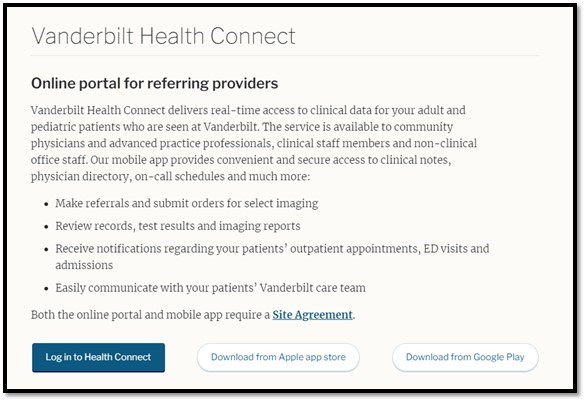Physician Search
 |
 |
| Consuelo Wilkins, MD, MSCI, Senior Vice President for Health Equity and Inclusive Excellence for Vanderbilt University Medical Center (VUMC) and Senior Associate Dean for Health Equity and Inclusive Excellence for Vanderbilt University School of Medicine, always knew she wanted to be a physician. "Health equity was built into everything I did, even if I didn’t know it or recognize it at the time," Wilkins said. "I have always learned and believed that people are the same — everyone deserves to be healthy, and everyone should have the best opportunities to take care of themselves and their families." Click below to learn more about health equity initiatives. https://momentum.vicc.org/2021/09/everyone-deserves-to-be-healthy/ |
Vanderbilt was the lead site for an NIH-funded, phase 2, multicenter influenza vaccine study in pediatric allogeneic hematopoietic stem cell transplant (HCT) recipients that may lead to a change in the current flu vaccine recommendations in this vulnerable population. Natasha Halasa, MD, MPH and colleagues recently published in the New England Journal of Medicine, that two doses of high-dose trivalent flu vaccine resulted in higher amounts of influenza-specific antibodies than two doses of standard dose quadrivalent vaccine. https://news.vumc.org/2023/03/02/high-dose-flu-vaccine-beneficial-for-pediatric-stem-cell-transplant-patients/ |
Virtual Patient-Specific 3D Specimen Maps for Adjuvant Head & Neck Radiotherapy Planning
Head/Neck
Head/Neck
This study measures the impact of patient-specific 3D specimen maps on adjuvant radiation treatment volumes and doses to critical organs.
Head/Neck
N/A
Topf, Michael
NCT05743569
VICCHN22102
Intraoperative Identification and Stimulation of the Glossopharyngeal Nerve
Head/Neck
Head/Neck
This clinical trial evaluates different nerve patterns to the throat muscles (stylopharyngeus and pharyngeal constrictor) and what they look like in different patients by measuring and photographing them in the neck during surgery when the nerves are dissected (separated into pieces) as part of regular surgical care. Researchers think that some of the muscles in the neck might be useful for treating a condition called obstructive sleep apnea (OSA). This happens when muscles of the throat relax at night and the airway becomes blocked. Blockage of airflow leads to drops in oxygen levels and can disturb sleep by forcing a persons brain to wake to restore airway muscles so they can breathe. This trial may help researchers provide a new way to treat OSA that may be better than the current standard ones.
Head/Neck
N/A
Ceremsak, John
NCT05754216
VICC-EDHAN23196
Haploidentical Bone Marrow Transplantation in Sickle Cell Patients (BMTCTN1507)
Hematologic
Hematologic
This is a Phase II, single arm, multi-center trial, designed to estimate the efficacy and
toxicity of haploidentical bone marrow transplantation (BMT) in patients with sickle cell
disease (SCD). Based on their age and entry criteria patients are stratified into two groups:
(1) children with severe SCD; and (2) adults with severe SCD.
toxicity of haploidentical bone marrow transplantation (BMT) in patients with sickle cell
disease (SCD). Based on their age and entry criteria patients are stratified into two groups:
(1) children with severe SCD; and (2) adults with severe SCD.
Hematologic
II
Kassim, Adetola
NCT03263559
VICCNCCTT1759
Project: Every Child for Younger Patients with Cancer
Miscellaneous
Miscellaneous
This study gathers health information for the Project: Every Child for younger patients with cancer. Gathering health information over time from younger patients with cancer may help doctors find better methods of treatment and on-going care.
Miscellaneous
N/A
Friedman, Debra
NCT02402244
COGAPEC14B1
A Multicenter Access and Distribution Protocol for Unlicensed Cryopreserved Cord Blood Units (CBUs)
Hematologic
Hematologic
This study is an access and distribution protocol for unlicensed cryopreserved cord blood
units (CBUs) in pediatric and adult patients with hematologic malignancies and other
indications.
units (CBUs) in pediatric and adult patients with hematologic malignancies and other
indications.
Hematologic
N/A
Kassim, Adetola
NCT01351545
VICCCTT1158
CIBMTR Research Database
Hematologic
Hematologic
The primary purpose of the Research Database is to have a comprehensive source of
observational data that can be used to study HSC transplantation and cellular therapies.
A secondary purpose of the Research Database is to have a comprehensive source of data to
study marrow toxic injuries.
Objectives:
To learn more about what makes stem cell transplants and cellular therapies work well such
as:
- Determine how well recipients recover from their transplants or cellular therapy;
- Determine how recovery after a transplant or cellular therapy can be improved;
- Determine how a donor's or recipient's genetics impact recipient recovery after a
transplant or cellular therapy;
- Determine how access to transplant or cellular therapy for different groups of patients
can be improved;
- Determine how well donors recover from the collection procedures.
observational data that can be used to study HSC transplantation and cellular therapies.
A secondary purpose of the Research Database is to have a comprehensive source of data to
study marrow toxic injuries.
Objectives:
To learn more about what makes stem cell transplants and cellular therapies work well such
as:
- Determine how well recipients recover from their transplants or cellular therapy;
- Determine how recovery after a transplant or cellular therapy can be improved;
- Determine how a donor's or recipient's genetics impact recipient recovery after a
transplant or cellular therapy;
- Determine how access to transplant or cellular therapy for different groups of patients
can be improved;
- Determine how well donors recover from the collection procedures.
Hematologic
N/A
Kassim, Adetola
NCT01166009
VICCCTT1110
Vincristine Pharmacokinetics in Infants
Pediatrics
Pediatrics
This pilot trial compares drug exposure levels using a new method for dosing vincristine in infants and young children compared to the standard dosing method based on body surface area (BSA) in older children. Vincristine is an anticancer drug used to a variety of childhood cancers. The doses anticancer drugs in children must be adjusted based on the size of the child because children vary significantly in size (height, weight, and BSA) and ability to metabolize drugs from infancy to adolescence. The dose of most anticancer drugs is adjusted to BSA, which is calculated from a patients weight and height. However, infants and young children have more severe side effects if the BSA is used to calculate their dose, so new dosing models have to be made to safely give anticancer drugs to the youngest patients. This new method uses a BSA-banded approach to determine the dose. Collecting blood samples before and after a dose of the drug will help researchers determine whether this new vincristine dosing method results in equivalent drug levels in the blood over time in infants and young children compared to older children.
Pediatrics
N/A
Borinstein, Scott
NCT05359237
COGPEPN22P1
Evaluation of Patient Reported Outcomes in Patients with Digestive System and Lung Neuroendocrine Cancer, NET-PRO study
Gastrointestinal
Gastrointestinal
This study evaluates the patient reported outcomes in patients with digestive system neuroendocrine cancer and lung neuroendocrine cancer. Patients with neuroendocrine cancer usually have a high symptom burden which may have a negative effect on health-related quality of life (HRQoL). Patient questionnaires gather information describing symptoms and effect on quality of life, cancer type and any treatments received. Studying quality of life in patients receiving treatment for neuroendocrine cancers may help identify the effects of treatment and improve future treatment plans. Information gathered from this study may help researchers understand whether patient's diagnosis, symptoms, and order of cancer treatments have any effect on quality of life.
Gastrointestinal
N/A
Ramirez, Robert
NCT05064150
VICCGI2247
Biomarker Verification in Pediatric Chronic GvHD: ABLE 2.0 / PTCTC GVH 1901 Study
This study will validate a previously developed pediatric prognostic biomarker algorithm
aimed at improving prediction of risk for the later development of chronic graft-versus-host
disease (cGvHD) in children and young adults undergoing allogeneic hematopoietic stem cell
transplant.
By developing an early risk stratification of patients into low-, intermediate-, and
high-risk for future cGvHD development (based upon their biomarker profile, before the onset
of cGvHD), pre-emptive therapies aimed at preventing the onset of cGvHD can be developed
based upon an individual's biological risk profile.
This study will also continue research into diagnostic biomarkers of cGvHD, and begin work
into biomarker models that predict clinical response to cGvHD therapies.
aimed at improving prediction of risk for the later development of chronic graft-versus-host
disease (cGvHD) in children and young adults undergoing allogeneic hematopoietic stem cell
transplant.
By developing an early risk stratification of patients into low-, intermediate-, and
high-risk for future cGvHD development (based upon their biomarker profile, before the onset
of cGvHD), pre-emptive therapies aimed at preventing the onset of cGvHD can be developed
based upon an individual's biological risk profile.
This study will also continue research into diagnostic biomarkers of cGvHD, and begin work
into biomarker models that predict clinical response to cGvHD therapies.
Not Available
N/A
Kitko, Carrie
NCT04372524
VICCPED2183
cfDNA Assay Prospective Observational Validation for Early Cancer Detection and Minimal Residual Disease
Miscellaneous
Miscellaneous
This is an observational case-control study to train and validate a genome-wide methylome
enrichment platform to detect multiple cancer types and to differentiate amongst cancer
types. The cancers included in this study are brain, breast, bladder, cervical, colorectal,
endometrial, esophageal, gastric, head and neck, hepatobiliary, leukemia, lung, lymphoma,
multiple myeloma, ovarian, pancreatic, prostate, renal, sarcoma, and thyroid. These cancers
were selected based on their prevalence and mortality to maximize impact on clinical care.
Additionally, the ability of the whole-genome methylome enrichment platform to detect minimal
residual disease after completion of cancer treatment and to detect relapse prior to clinical
presentation will be evaluated in four cancer types (breast, colorectal, lung, prostate).
These cancers were selected based on the existing clinical landscape and treatment
availability.
enrichment platform to detect multiple cancer types and to differentiate amongst cancer
types. The cancers included in this study are brain, breast, bladder, cervical, colorectal,
endometrial, esophageal, gastric, head and neck, hepatobiliary, leukemia, lung, lymphoma,
multiple myeloma, ovarian, pancreatic, prostate, renal, sarcoma, and thyroid. These cancers
were selected based on their prevalence and mortality to maximize impact on clinical care.
Additionally, the ability of the whole-genome methylome enrichment platform to detect minimal
residual disease after completion of cancer treatment and to detect relapse prior to clinical
presentation will be evaluated in four cancer types (breast, colorectal, lung, prostate).
These cancers were selected based on the existing clinical landscape and treatment
availability.
Miscellaneous
N/A
Rini, Brian
NCT05366881
VICCMD21111




